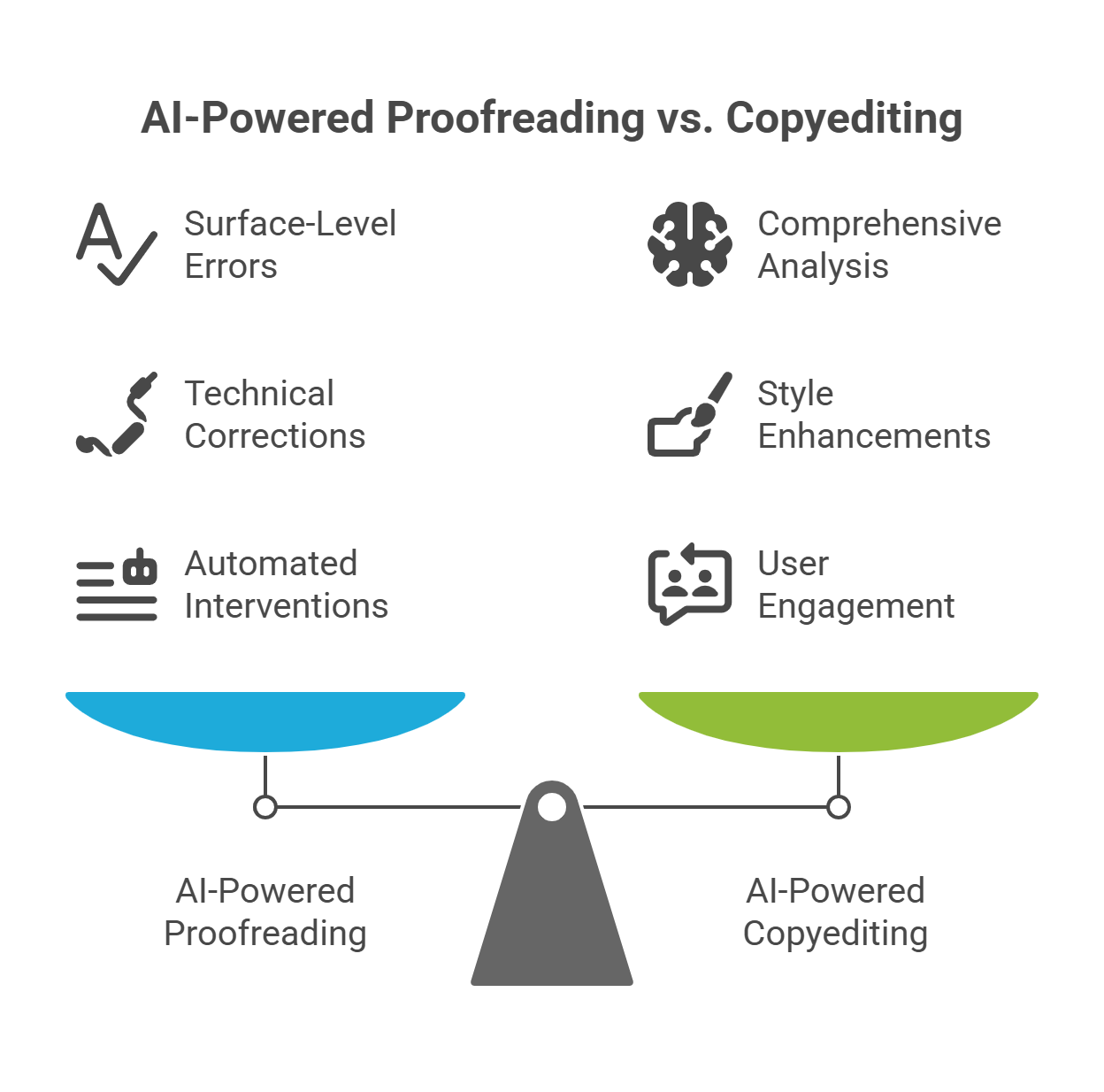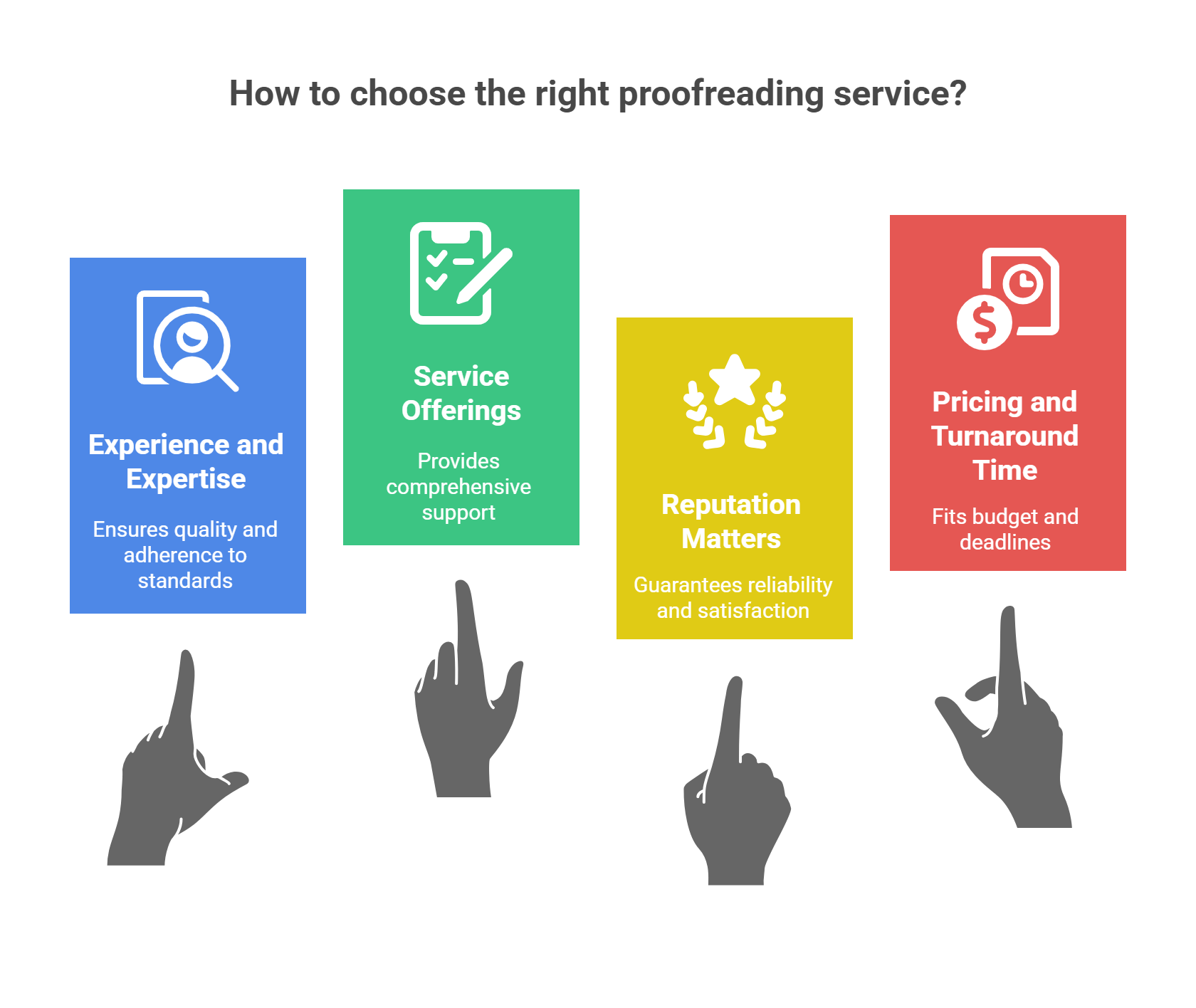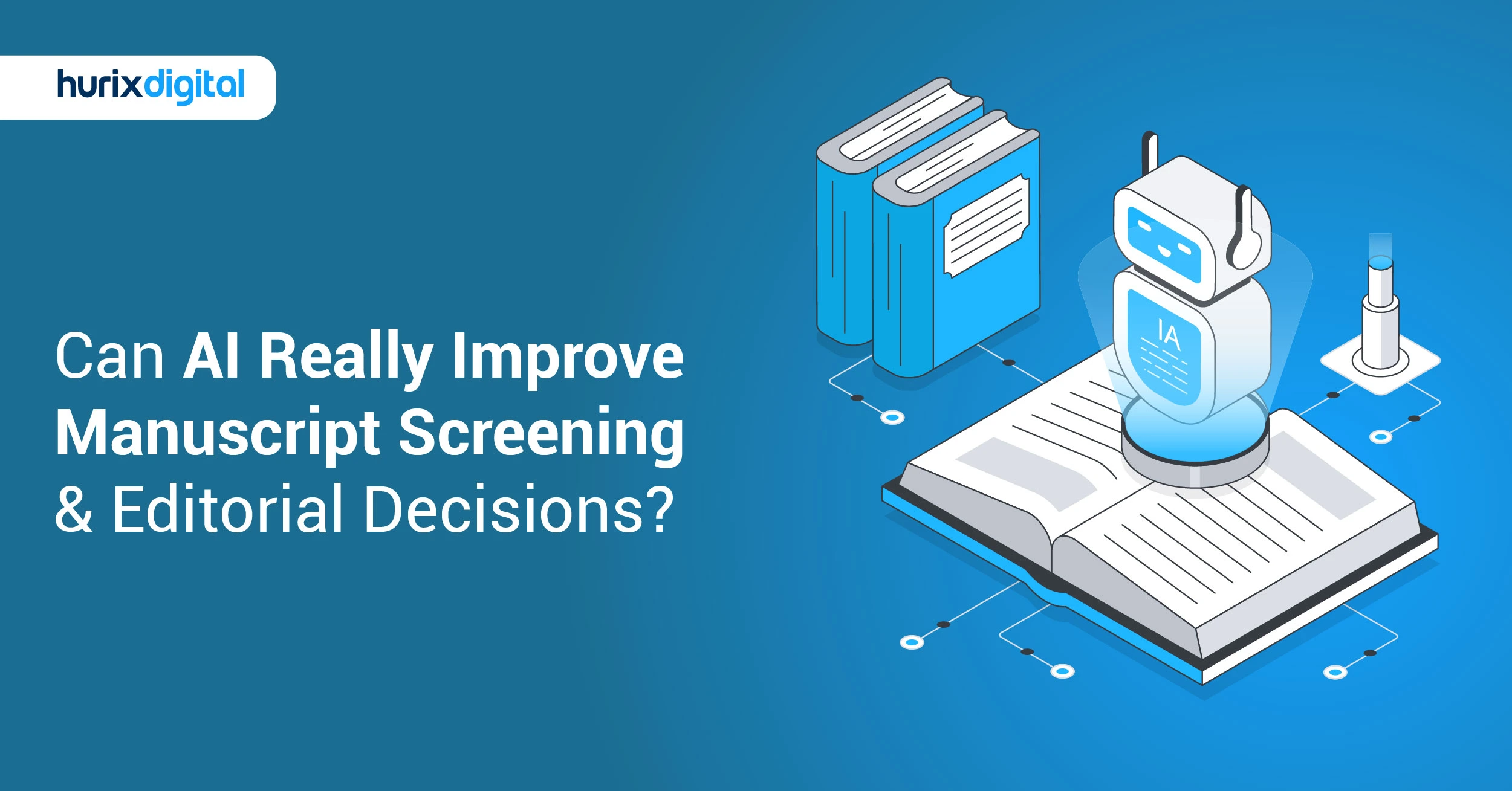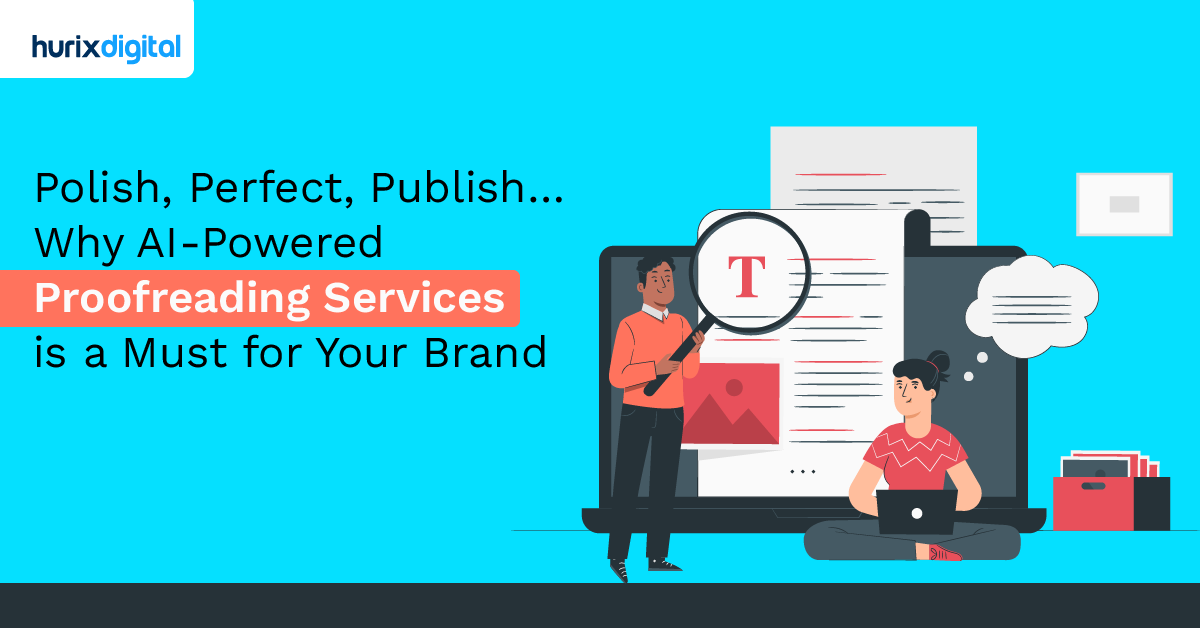
Is AI the Future of Error-Free Proofreading?
Summarize with:
Quality communication is the lifeblood of any successful business. A brand that knows how to communicate effectively and create a unique brand voice can often create a solid customer base. Psychologist Jerome Bruner found that customers are 22 times more likely to remember brand details when communicated in the form of a story rather than a dry product video or just facts and figures.
In this high-stakes environment, even the slightest misstep can propel your brand from “brilliant” to “blunder.” A solitary typo in your proposal could jeopardize a lucrative deal, and a grammatical error on your website might trigger customer frustration or erode trust.
To avoid this from happening, you need a strong quality assurance process that ensures every piece of communication is carefully drafted, reviewed, and edited before it reaches the final version. This post will discuss how the best proofreading services help you enhance your business’s quality assurance process. Read on!
Table of Contents:
- What is Proofreading?
- What are Proofreading Services?
- Why Does Proofreading Matter?
- Top 7 Benefits of Proofreading Services for Businesses
- How Does an AI-Powered Proofreader Work?
- The Capabilities and Limitations of AI Proofreading Tools
- AI-Powered Proofreading Vs. AI-Powered Copyediting
- Why AI Tools Can’t Replace Professional Proofreaders?
- AI-Assisted Proofreading: The Right Answer
- What are the Key Factors for Choosing the Right Proofreading Services?
- AI Proofreading: Complement, Not Replacement
What is Proofreading?
Proofreading is the practice of meticulously reviewing written content. It is a vast practice, but the main tasks include rectifying grammar, spelling, and punctuation errors, as well as ensuring clarity, coherence, and consistency.
Of course, as the final step in the writing process, it does not just cater to document structure, formatting, and grammar. Proofreading services ensure that the content written is correctly tuned for the target audience in terms of organizational vision, marketing theme, or the content’s intent and, ultimately, messaging.
What are Proofreading Services?
Proofreading services are often a team of professional experts and tools that go beyond simply checking for typos or grammatical errors. They involve a critical review of your text to ensure:
- Accuracy: All factual information, figures, and references are correct and consistent.
- Clarity and Concise: The writing is easy to read and understand, avoiding jargon and unnecessary complexity.
- Style and Tone: The language is appropriate for your audience and aligns with your brand voice.
- Consistency: Formatting, punctuation, and style are applied uniformly throughout the document.
This can be useful in multiple avenues, such as checking website content, crafting a marketing campaign, prepress services before publishing a book, or finalizing a critical business document. Proofing services ensure your message is clear, effective, and error-free.
This reflects positively on your brand image and ultimately contributes to your overall success.
Why Does Proofreading Matter?
Quality assurance (QA) is a process that helps organizations maintain the desired level of service or product quality by paying strict attention to every stage of the process. This can also be implemented in communication protocols, where QA overviews can help to improve internal and external communication.
However, catching errors at first glance is not as easy as it looks. According to research, an average proofreader can catch 50%-65% of typos, but an experienced professional can typically catch at least 90%. So, the stakes are clear: if you need flawless communication, you must go beyond mere grammar correction and focus on proofreading and editing services that serve as your quality assurance partners.
Top 7 Benefits of Proofreading Services for Businesses

Effective communication is the foundation of any successful company. Information must be communicated succinctly and error-free to clients, customers, or stakeholders.
Here are the top benefits of proofreading services for businesses:
1. Ensuring Consistency and Uniformity
Consistency in messaging is essential for branding and conveying meaningful information. Inconsistent formatting, spelling, or punctuation can confuse readers and weaken the brand’s identity.
Professional proofreaders adhere to publication standards to ensure that every piece of content reflects the organization’s intended image and style.
2. Enhancing Brand Image
Obtaining and retaining customers depends on a solid brand reputation. Written communication errors can harm a company’s reputation by posing uncertainty about the standard of its products and services.
Professional proofreading services dismiss any doubts by delivering error-free and flawless content that reflects a brand’s dedication to quality.
3. Optimizing Readability and Communication Clarity
Information must be clear and concise to communicate effectively. Jargon, poorly written sentences, and complex language can make reading difficult and frustrating.
Expert proofreading services guarantee that content is written clearly, concisely, and comprehensibly, improving accessibility and engagement for the intended audience.
4. Mitigating Legal Risks
Errors or inaccuracies in written communication may be legally significant in some industries. A single misplaced word or misread sentence in various documents, including contracts and disclaimers, can result in litigation or financial repercussions.
Expert proofreaders have a keen eye for detail, which enables them to identify potential legal issues and rectify them before they become problems.
5. Tailoring Content for Target Audiences
In the modern global marketplace, businesses often cater to diverse audiences with varying language preferences. Accurate and culturally sensitive translations are essential for effective communication with foreign clients.
Expert proofreading services provide the linguistic expertise necessary to ensure that translated content is accurate, culturally relevant, and effectively conveys the intended message. This content localization for the target audience ultimately boosts ROI.
6. Efficient Resource and Time Management
Proofreading content can be time-consuming, especially for companies with limited funding. By hiring experts to handle proofreading and guarantee error-free written materials, companies can concentrate on their core competencies.
Expert proofreaders review and edit content quickly, saving you time and money. They are efficient and possess the necessary expertise.
7. Heightening SEO Performance
An effective copywriting investment is good for any website’s SEO. Visitors are unlikely to spend time on content they deem sloppy or untrustworthy because abundant content is available online. Well-written, grammatically correct, and coherent writing can pique readers’ interest and boost interaction.
The more time readers spend on your posts, the better search engine rankings you will receive for your website. Consequently, facilitating easy comprehension through editing and proofreading services will raise your overall SEO rankings and improve engagement.
How Does an AI-Powered Proofreader Work?
AI proofreaders employ natural language processing (NLP) and machine learning algorithms to analyze and correct written text. They begin by analyzing the input text, which involves breaking down the text into individual words, sentences, and paragraphs.
The proofreader uses pre-programmed grammar and syntax rules to identify potential errors. These rules cover spelling, punctuation, grammar, sentence structure, and syntax. Advanced AI-powered proofreaders go beyond basic rule-based checks and incorporate contextual understanding to identify ambiguous phrases, suggest improvements, and make corrections.
Machine learning models are trained on vast datasets that include correctly written text and examples of common errors. Once errors are detected, the proofreader generates suggestions for corrections. Users can interact with the proofreader by reviewing and accepting or rejecting the suggested corrections.
AI proofreading may also incorporate a feedback loop that allows users to provide feedback on suggested corrections.
The Capabilities and Limitations of AI Proofreading Tools
Before jumping to any conclusions, it is important to understand what AI proofreading tools can or cannot do.
What AI Tools Can Do:
- AI tools can quickly scan content and offer suggestions far beyond a basic spellchecker.
- AI proofreading tools can check grammar and suggest ways to simplify complex sentences.
- These tools can adjust tone to align with a brand’s voice or target audience.
- Much like standard spellcheckers, they can identify and correct errors in punctuation, spelling, word choice, and formatting.
- AI proofreading tools go a step further than regular spellcheckers and grammar checkers by uncovering tone, formality, and clarity inconsistencies.
- AI tools can also detect plagiarism and even identify machine-generated paraphrased content.
- AI proofreading tools can work efficiently and quickly in the cloud on large volumes of text without depending on the capabilities of your local environment.
- AI proofreading tools can adapt to variations in writing styles and can be trained on specific style guides.
What AI Tools Cannot Do:
- AI proofreading tools struggle to identify subtle and awkward phrasing that a human reader will find hard to ignore.
- AI tools aren’t the best fit for detecting nuances in tone and style. This can lead to a lack of alignment with the intended message and audience.
- AI proofreading tools may not handle non-standard spelling, grammar, and punctuation as effectively as human proofreaders. Often, they can correct the spelling of proper nouns, words, and phrases used in a different language.
- AI tools cannot offer advice on the structure and flow of a document.
- They are not designed to highlight potential ethical issues, such as libel or plagiarism.
- AI proofreading tools cannot offer feedback, discuss the author’s intent, or alter their stance.
- AI proofreading tools lack the intrinsic capacity for critical thinking and problem-solving, which are still very human traits.
- AI tools are not designed to identify unconvincing examples, character development issues, plot holes, poor use of bullet lists, or inappropriate humor.
- They cannot comment on trite, tired, or simply boring writing, nor offer advice on improving poor pacing, one-dimensional descriptions, and weak conclusions.
AI-Powered Proofreading Vs. AI-Powered Copyediting

AI-powered proofreading and AI-powered copyediting tools are both applications of artificial intelligence in language-related tasks, but they serve distinct purposes in the writing and editing processes.
Here is a detailed comparison of AI-powered copyediting vs proofreading, highlighting the major differences between the two:
1. Focus and Scope
- AI-Powered Proofreading: The primary focus of AI-powered proofreading is to identify and correct surface-level errors in grammar, spelling, punctuation, and syntax. It is designed to catch and rectify mistakes that may have been overlooked during the writing and editing process, ensuring a polished and error-free document.
- AI-Powered Copyediting: AI-powered copyediting, on the other hand, goes beyond surface-level errors. It involves a more comprehensive analysis of the text, addressing issues related to style, tone, clarity, consistency, and overall writing quality. Copyediting aims to enhance the overall flow and coherence of the content.
2. Types of Corrections
- AI-Powered Proofreading: Corrections made by AI-powered proofreading tools are often straightforward and focus on fixing technical errors. These may include correcting misspelled words, adjusting punctuation, and ensuring proper grammar usage.
- AI-Powered Copyediting: In addition to technical corrections, AI-powered copyediting tools offer suggestions for enhancing sentence structure, refining word choices, and refining the overall writing style. They may also offer insights into the organization of ideas, helping to enhance the overall readability and effectiveness of the content
3. Level of Intervention
- AI-Powered Proofreading: Proofreading tools typically offer more automated interventions, directly correcting identified errors without requiring extensive user input. The user often reviews and accepts the suggested corrections with minimal involvement in the decision-making process.
- AI-Powered Copyediting: Copyediting tools may provide suggestions and feedback that require more user engagement. Writers or editors may need to make decisions about style preferences, tone adjustments, and other aspects of writing improvement.
In short, while both AI-powered proofreading and AI-powered copyediting utilize artificial intelligence for language-related tasks, the former primarily targets technical errors, whereas the latter extends its capabilities to improve writing style, clarity, and overall quality.
Why AI Tools Can’t Replace Professional Proofreaders?
Now that we understand what AI proofreading tools can and cannot do, it becomes clear why they will not soon replace professional proofreaders.
To reiterate, the main reasons can be summarised as follows:
- Accuracy: Although AI experts train these tools on vast datasets to identify spelling mistakes, grammatical errors, and formatting inconsistencies, they cannot accurately grasp the intricacies of context-dependent language.
- Contextual Understanding: AI relies on predefined rules and patterns. It completely lacks a subtle understanding of human language and context. Human proofreaders bring their vast experience and knowledge to the table, enabling them to better contextualize information than AI tools.
- Factual Accuracy: AI sometimes confidently yields unreliable or inaccurate information, presenting it as the truth. This usually happens when it combines different pieces of information without considering the context. Only human fact-checking can ensure a write-up’s factual accuracy.
- Style Guide Limitations: AI algorithms lack an understanding of the brand voice and team culture of specific organizations or industries. For this, you need a professional proofreader.
- Limited Language Support: AI proofreading tools can only spot errors if they fit certain parameters. Words from native languages can often be incorporated into English-language articles written for a multilingual audience. Unlike a human proofreader, AI tools will treat them as errors.
- Inability to Explain Corrections: AI tools often can’t explain why they make certain corrections.
- Inability to Understand Idiomatic Expressions: AI tools struggle with ambiguous phrasing, idiomatic expressions, and unconventional language usage.
- Inability to Understand Creative Writing: Human editors can recognize the nuances of tone and style, especially in creative writing. AI tools cannot grant the leeway needed for such writing in their application of grammar and punctuation rules.
AI-Assisted Proofreading: The Right Answer
So, what is the purpose of AI proofreading tools? The answer is simple: to make the lives of professional proofreaders easier.
1. Speed
Professionals can utilize AI tools to significantly expedite the proofreading and editing process. This enables the publication of more polished products in a shorter timeframe.
2. Error Detection
AI can go beyond basic spell checking and provide more accurate results, helping professional proofreaders save time and effort.
3. Grammar Check and Readability Improvement
Unlike average grammar checks, AI proofreading tools can give you multiple suggestions on better phrasing of a sentence. This improves the editing experience and solves readability issues.
4. Tone Adjustment
You can train AI proofreaders by tweaking basic criteria to detect better and correct the tone of an article.
5. Consistency and Efficiency
AI proofreading tools offer the benefit of improving consistency in projects that involve multiple authors or editors, as everyone sticks to the same rules. This also makes the entire process more efficient.
What are the Key Factors for Choosing the Right Proofreading Services?

With a growing number of proofreading services available, selecting the right one for your needs can feel overwhelming.
Here are some key factors that can help you pick the ideal proofreading services for your needs:
1. Experience and Expertise
Choose a service whose professionals demonstrate strong subject matter knowledge and a deep understanding of relevant style guides and formatting requirements.
2. Service Offerings
Check if your proofing services provider also includes additional options, such as proofreading, editing, copywriting, or pre-press formatting assistance.
Ensure the service provider offers your support and is comfortable working with your preferred document formats and software.
3. Reputation Matters
Investigate the reputation and experience of the proofreading service providers you are considering. Look for reviews, testimonials, or case studies highlighting their track record of delivering high-quality results.
4. Pricing and Turnaround Time
Compare pricing structures and turnaround times offered by different providers. Consider your budget and project deadlines when making your decision. Look for transparent pricing models and be wary of hidden fees or charges.
By carefully considering these factors and conducting thorough research, you can select the ideal proofreading service partner that meets your specific needs and delivers exceptional results. This will contribute significantly to your communication excellence and overall business success.
AI Proofreading: Complement, Not Replacement
As the discourse so far shows, the ideal approach is a harmonious blend of AI and human proofreading. What professional proofreaders need today is the right digital partner to help them leverage the power of AI. This is where Hurix Digital comes into the picture.
Hurix Digital‘s AI proofreading tools meticulously detect errors and ensure consistency in style and language. We offer customized options to help businesses align with their brand voice. With our automated QA services, say goodbye to tedious manual proofreading and formatting checks today.
Contact us today to leverage the power of AI.
Summarize with:

Vice President – Content Transformation at HurixDigital, based in Chennai. With nearly 20 years in digital content, he leads large-scale transformation and accessibility initiatives. A frequent presenter (e.g., London Book Fair 2025), Gokulnath drives AI-powered publishing solutions and inclusive content strategies for global clients
 Upcoming Masterclass | Build an Army of Brand Evangelists using Training & Development | November 20th, 8:30 AM PDT | 11:30 AM EDT | 10:00 PM IST
Upcoming Masterclass | Build an Army of Brand Evangelists using Training & Development | November 20th, 8:30 AM PDT | 11:30 AM EDT | 10:00 PM IST


